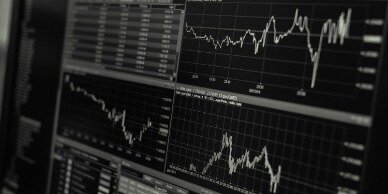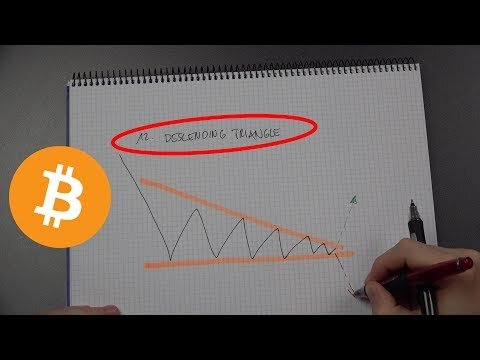Ultimate Morning Doji Star Guide For Best Results
Contents:


The patterns that form in the candlestick charts are signals of such market actions and reactions. When found in a downtrend, this pattern can be an indication that a reversal in the price trend is going to take place. What the pattern represents from a supply and demand point of view is a lot of selling in the period of the first black candle.

As such, it is always important to confirm any potential signals with additional technical analysis before making any trading decisions. The morning star candlestick pattern is a reversal indicator that can be used in all assets including currencies and stocks. While no pattern is 100% accurate, the morning star tends to do relatively well. The candlestick pattern can be used by other reversal indicators like double exponential moving averages. Like the Doji star candle pattern, the morning Doji star pattern also appears in a downtrend and indicates a bullish reversal. However, the difference comes in the shape of the body of the middle candle, hence the Doji candle.
Limitations of the Morning Star Candlestick Pattern
The agency’s research is used by many big names in the evening star doji sector, including the Financial Industry Regulatory Authority. The Signal_ThresholdOpen/Signal_ThresholdClose input parameters allow to specify threshold levels for open and close of positions. In Japanese, “doji” (どうじ/ 同事) means “the same thing,” a reference to the rarity of having the open and close price for a security be exactly the same. Depending on where the open/close line falls, a doji can be described as a gravestone, long-legged, or dragonfly, as shown below. It will draw real-time zones that show you where the price is likely to test in the future.
The “Evening Doji Star” pattern appears at the end of an uptrend and signals the market reversal from bullish to bearish . The “Morning Doji Star” pattern appears at the bottom of a downtrend and signals a market reversal from bearish to bullish . Historically-guided traders will go bearish when the price falls below the doji’s close, setting a stop loss just above the doji candle’s high. The key to using this pattern effectively is to wait for confirmation. Once the third candle has closed, look for bullish signals from other technical indicators to confirm that the reversal is indeed underway. The first candlestick in the pattern is a bearish candle, followed by a small bullish candle.
My first goal is to earn an avg income of 1 thousand daily by investing and doing margin trading. So, I am only trying to understand how early any breakouts like this can be capitalized. However I would have been happier if the prior trend was a bit more pronounced and the 3rd day candle a bit longer. But I guess with some about of flexibility, we can consider this as a morning star. If I were trading based on this, I would expose very little capital on this trade simply because of the two point I just mentioned.
You should know how to identify a downtrend if you are reading around candlestick patterns, so I’m not going to go into that. Morning Doji Star is a bullish trend reversal candlestick pattern consisting of three candles. A bearish Doji Star is a signal that shows the end of an uptrend and start of a bearish reversal leading to decreasing the prices.
What Is a Doji Candlestick Pattern
The pattern forms in a down trend; the first candle is a long black one. The next candle opens lower with a doji that has a small trading range. The last candle – a long white one – closes above the midpoint of the first candle. Morning Star Candlestick Pattern IllustrationThe morning star candlestick pattern is almost identical to the morning doji star. The only difference between the morning star and the morning doji star is that the second candle has a small real body in the morning star, whereas the morning doji star requires a doji.
The abandoned baby pattern is a three candlestick reversal pattern that can occur at the end of an uptrend or downtrend. The second candlestick is a doji, which is a candlestick with a small real body that gap up or down from the previous candle. A candlestick pattern can not be used to trade alone without the confluence of other chart patterns.
- But not every Doji is similar; some are different from others.
- Unlike the single and two candlestick patterns, both the risk taker and the risk-averse trader can initiate the trade on P3 itself.
- Doji patterns are often a component of larger candlestick patterns such as the evening or morning star doji.
- The numbers are so good that the buyers are willing to buy the stock at any price on Tuesday morning.
- Like any other chart pattern, the Doji Morning Star has pros and cons.
If you see the morning star pattern forming, it’s a good idea to enter a long position. Look for a target price that is at least the same distance away from your entry point as the height of the morning star. The second candlestick is a small candlestick that gaps down from the first candlestick.
The Doji Morning Star Candlestick Chart Pattern – Pros and Cons
The experts consider bullish Doji Star Patterns as signals to buy. This act as a bell to inform that arrival of the bulls is imminent after a long bearish phase. The question is how the Doji Morning Star differs from the traditional Doji.
Unlike the single and two candlestick patterns, both the risk taker and the risk-averse trader can initiate the trade on P3 itself. Waiting for a confirmation on the 4th day may not be necessary while trading based on a morning star pattern. The morning star is a bullish candlestick pattern which evolves over a three day period. The pattern is formed by combining 3 consecutive candlesticks. The Japanese were fond of naming candlestick patterns after real-life visual representations.
Using a Doji to Predict a Price Reversal
The opposite of a morning star is, of course, an evening star. The evening star is a long white candle followed by a short black or white one and then a long black one that goes down at least half the length of the white candle in the first session. The evening star signals a reversal of an uptrend with the bulls giving way to the bears. Technical analysts often confuse the morning doji star with other candlestick patterns. It’s essential to understand the differences when using candlestick pattern technical analysis. Before we discuss the optimal morning doji star candlestick trading strategy, let’s discuss how most traders start the day off wrong and get mixed results with this pattern.

If you are interested in reading more about Morning Star candlestick patterns, including you must first login. A Morning Star candlestick pattern has completed development after the 3rd trading session ends. The Bulls continue their rally that started during the 2nd trading session. This buying rally causes a long green candlestick to develop by the end of the trading session. This 3rd candlestick then completes a Morning Star candlestick pattern. Wait for confirmation of the reversal by looking for a bullish candlestick to close above the high of the Doji candlestick.
How to trade the bullish Doji Star pattern?
Unlock our free video lessons and you will learn the exact chart patterns you need to know to find opportunities in the markets. The Doji Morning Star indicates a bullish reversal following a downward trend. As such, it appears at the end of a downtrend and suggests that sellers are losing momentum. As for our entry point, we’ll enter the trade after the confirmation candle. Some traders like to enter a trade immediately after the formation of the Doji Morning Star; however, it’s best to wait and check the RSI if it rises above 30 .
In the chart above, you can see the market trend reversal following the formation of the Doji Morning Star. Here, you’ll enter a long position when you notice the last bullish candle. Because you cannot cosider the pattern as valid until it completely appears on the chart. But both these guys need a completed candlestick patter to appear on the screen which happens at the close of the day. The evening star is a bearish pattern, which occurs at the top end of an uptrend.
When a reversal does occur, it isn’t always reliable, either. There is no assurance that the price will continue in the expected direction following the confirmation candle. The best suggestion to trade this pattern is with the confluence of other technical price patterns. If you are planning to trade doji star pattern alone then you may not become a profitable trader. Method 2, bullish candlestick should close above the high of bearish candlestick.
This strategy gives the buyer of the call option the right but not the obligation to buy a security at a specific price at a specific time. To make money from this strategy, the price of the underlying security must increase enough so that the price of the call option goes up as well. If the stock price does not rise, then the option will expire worthless and the buyer will lose the entire amount paid for the option. A White Candle is formed, and the bulls are gaining control. Trading volume is still low however which indicates that the bulls are not so strong. Indeed, a Hanging Man appears, and the bears are in control of the stock for a few days.
Candlestick Patterns – Barchart
Candlestick Patterns.
Posted: Wed, 27 Jul 2022 18:35:13 GMT [source]
Adding to the MANISH’s query , Is it possible to make money in market on daily basis and run your house, means Is it possible to generate a salary type income from trading. I have got the essence of both your point and the candle stick pattern, so may be with time and experience I might be able to answer it. Nevertheless, as I have mentioned earlier, you need to have some amount of flexibility.
You can use it in MQL5 Wizard after rehttps://trading-market.org/t of the MetaEditor. The short position must be closed if RSI indicator has crossed upward the critical levels 70 or 30. A spinning top also signals weakness in the current trend, but not necessarily a reversal. If either a doji or spinning top is spotted, look to other indicators such asBollinger Bands® to determine the context to decide if they are indicative of trend neutrality or reversal.
Therefore, it is a wise move to sell the stock whenever a bearish Doji Star pattern appears. The MACD (Moving average convergence/divergence) works similarly to the RSI indicator, and you can use it the same way to confirm the Doji morning star pattern. In addition to divergences, you can also wait for the MACD signal line and the histogram bars to show momentum changes. The middle candle of the morning star captures a moment of market indecision where the bears begin to give way to bulls. The third candle confirms the reversal and can mark a new uptrend.
Shooting Star: What It Means in Stock Trading, With an Example – Investopedia
Shooting Star: What It Means in Stock Trading, With an Example.
Posted: Sat, 25 Mar 2017 19:31:54 GMT [source]
If you practice Japanese candlestick charting techniques, you might be surprised to learn the data shows traditional morning doji star trading strategies lose money. If you are new to candlesticks, read our guide to the top 10 candlestick patterns to trade the markets. This pattern is considered a bullish reversal because it indicates that buyers are stepping in to push prices higher after a recent period of selling pressure.
Let’s look at some of the differences between these one-bar patterns. The best way is to create the separate class, derived from CExpertSignal for checking of formation of candlestick patterns. For confirmation of trade signals, generated by candlestick patterns, it’s sufficient to write the class, derived from CCandlePattern and add the necessary features there. Every candlestick pattern has four sets of data that help to define its shape. Based on this shape, analysts are able to make assumptions about price behavior. The filled or hollow bar created by the candlestick pattern is called the body.
